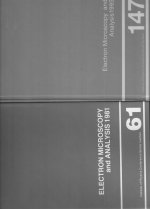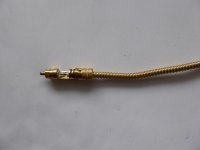Ed: $6 a foot is hardly in what I would call the special league for coax. But as you know horses for courses. At cable TV frequencies RG6 is lower loss despite the lack of silver and comedy shield coverage.
JN,
Now I have to check and see if Bode is still in the required course track.
I would hope it is for EE.
What hit me in the face, was the fact that the motion control engineers, even the with masters degrees, have absolutely no clue what a bode plot is, nor what phase margin is. NO experience with gears, springs, masses, electronics, nothing!! Never tuned a car, never cut a gear, never operated a lathe or milling machine..
I'm reading papers from national labs about how they are working their way down to 50 micron accuracy in positioning.. and yet, my group is already below 50 nanometer accuracies on the fly, and 10 nanometer static. The worst part is, that was the results of the first tuning pass for a guy who has never done it before!!
The kids are not being taught what they need to know, it is horrible!!!!
What really scares me is the fact that high level managers are trying to emulate how I run meetings, as I get physicists, engineers, technicians, programmers, scientists to actually engage in the discussion...massive brainstorming sessions that create tremendous advances and understandings well beyond other world class facilities...
My advantage...my late wife taught me well...very well...I learned a lot from her. But not all she knew....!!
jn
Scott,
In normal use the air surrounding an antenna is also not a conductor.
Neither is the dielectric in a RG58/59 cable. The tests were on the wire not the antenna BTW removed after years of field use with the insulation flaked off and corroded.
Still nothing tangible, 1.2dB/ft is relatively huge at <1MHz. I've seen coax with ferrite doped insulator but I'd like to see your formulation in detail.
@JN
Teaching is a problem particular in the RF comms industry. The old timers are mostly retired or have passed away. Techs at the trade level are only interested in pressing the auto test button on their test equipment and looking for the pass/fail response on the screen.
Teaching is a problem particular in the RF comms industry. The old timers are mostly retired or have passed away. Techs at the trade level are only interested in pressing the auto test button on their test equipment and looking for the pass/fail response on the screen.
I’ll know better next time. Again, sorry.
Peace this is still interesting stuff even if it is not directly applicable, if anyone here can follow the maths good for you. Note this is tax payer funded and not subject to copyright.
http://mirror.thelifeofkenneth.com/...Distances_ M Friedman_ R F Fernsler_ 2001.pdf
Agreed..however, it's not limited to RF comms. So many disciplines suffered this instant gratification push the button get answer stuff..@JN
Teaching is a problem particular in the RF comms industry. The old timers are mostly retired or have passed away. Techs at the trade level are only interested in pressing the auto test button on their test equipment and looking for the pass/fail response on the screen.
@billshurv
Lets fix our audio cable problems with some 7/8 inch Heliax.
I hate that stuff. The bending radius sucks, and you've no idea how heavy 800 foot spools of that is...well, maybe you do..
I pulled two runs 800 feet, that stuff is heavy....Learned very early on, if you want street cred with the techs, do the work alongside them. Sweat equity with the techs is huge. They engage hugely when the engineer demonstrates the desire to do the work, and I learn a lot about what can be done...win win..
Funny thing is, the day I helped them pull the two runs, their supervisor took the day off. What was advertised as a two day job by the super, took three hours. Super was not happy...odd...while they were tie wrapping the first cable, I was pulling the snake for the second. The techs, while surprised, nonetheless worked diligently with me. NOTHING beats having the boss actually sweating in the trenches with the workers, asking their opinion, and then following their advice.. NOTHING..
ps...course, I wasn't actually their boss.... but, I still got street cred... for subsequent wire pulls (30 million dollars of wire), they actually listened to me. Fiber, cat6, coax, 535 kcmil, I would explain the concerns (like creasing the 500 mil heliax causing prop delays) and they listened..it was amazing.(note: with the young kids, prop delay and coax, you explain it exactly as a brake line where tight bends can kink the tubing and compromising the fluid movement, they understood that perfectly. As a result, 270 (quantity) 50 meter long runs of five cables of times microwave lmr 240 was run perfectly the first time by inexperienced kids.). In fact, a billion dollar machine had exactly two wire pairs done incorrectly. A pair or lmr240 cables were accidentally swapped, and one magnet was reverse polarity (not one I was responsible for, my 1200 magnets were perfect..)
The alleve I had to take after doing the physical work was well worth it, the kids were excellent workers. (some day, I'll be too old for this cr...)
Yah, I'm rambling...point is, the kids are the future, it is important to learn how to work with them..
jn
Last edited:
I've been forntuate to work with some very good Engineers in RF Design, System and DSP.
Always willing to impart their knowledge although at times some of it may have been a little over my head. I also learnt how insanely complex engineering can be behind the scenes.
Always willing to impart their knowledge although at times some of it may have been a little over my head. I also learnt how insanely complex engineering can be behind the scenes.
Even now, I am trying to teach the young controls guys how to control multi-ton objects to the single digit nanometer level during high acceleration and velocities of a mm/sec.....they have no idea what a bode plot is, what phase margin is, how to stabilize a negative feedback system with 6th order response, how to design an adaptive feedback system...THE EXACT TECHNOLOGY THAT YOU ARE AN EXPERT IN!!! Well, most of it anyway. I have the luxury of being able to design feedback systems which can adapt gain, feedforward, and integration to changing phase margin, dynamic springiness, shifting masses, non orthogonal axis...you know, the simple stuff...audio cannot do that in a timely fashion. My biggest problem is, I have to trade off complexity of the system to do the task with the controls peoples ability to understand what I did. 23 years ago, I never considered that, so I still am the only one who understands the system I built then.... Now, I'm a little more seasoned..(and yes, I shower every day so it's not that kind of seasoned...)
jn
I want a copy of your class. . . I could use the knowledge.
I'm not embarrassed to steal ideas and knowledge from the best. It sure beats making those same mistakes again and again.
DB25. It's the future for audio 😛
Can't wait to see the upcoming state of the art audio cable. 😀@billshurv
Lets fix our audio cable problems with some 7/8 inch Heliax.
Well, instead of the best, perhaps mine...I want a copy of your class. . . I could use the knowledge.
I'm not embarrassed to steal ideas and knowledge from the best. It sure beats making those same mistakes again and again.
The last presentation is 114 pages to date, heavy with animations but designed so that I explain during. It is heavy on what was done wrong. when I get to work, I can send it. it details lots of stepper motor issues, non orthogonal gantry algorithm stuff, some bode with phase margin, and a whole lot of torque diagnostics using three phase brushless servos, mechanical issues, as well as a whole lot on what the motion vendor teaches that is not correct w/r to our magnetic devices. (things with magnets are non linear force, but the vendor only teaches linear system work.. feedforward parameters are strictly linear, so it is not possible to optimize motion using feedforward velocity and acceleration, adaptive tuning is the only way to work the problem. Also, adaptive gain adjustment as a function of acceleration may be required, but nobody has ever done that as far as I can tell) The motion platform we use is incredibly powerful, I can change most parameters on the fly...but w/r to the controls people, that power can also be a problem.. So I have to be careful in how complex I make the systems that are used day by day..that is why we are putting together a lab based device and control system, I will use it to teach the control guys the more advance algorithms. The cost of the electronics is quite staggering, the linear absolute encoders are 7 grand apiece...and, that is for the stainless scales, the Invar scales (zero TCE) are a tad more expensive..😱 (when you deal with 5 to 10 nanometers, tenth of a degree variations kinda kill the overall accuracy..)
jn
I wish someone would address what actually constitutes the signal carried by a cable.
You mean that fact that the energy is contained in the EMF between the conductors? Perhaps the dielectric should be more of a focus than the conductor? (sorry, I'm not good with sarcasm).
Cheers!
Howie
Is heliax still done with tubing cutters and hacksaws? That’s how I was taught and it did work but seemed a bit crude 30 years ago.
Airplanes are full of silver plated coax these days. RG 400 dual shield PTFE inside and FEP outside and less than $4.00 a foot. All my RF test cables use it with crimp connectors.
Airplanes are full of silver plated coax these days. RG 400 dual shield PTFE inside and FEP outside and less than $4.00 a foot. All my RF test cables use it with crimp connectors.
I found some data taken by a ham on coil Q with wire that has been outside for years and numbers were in the <0.1dB range. BTW the best hams are very savvy and the snake oil does not penetrate far with them.
WA4PSC here, licensed since 1970...many high-Q coils used in tank circuits are silver plated but the actual performance between them and bare copper only seems to depart slightly at VHF and above due to skin effect when oxidized. The highest-Q coils in antenna traps are tubular aluminum which very quickly forms an oxide layer growing thicker over time, yet the performance does not seem to change, even at VHF and above. The difference can often be entirely attributed to ohmic losses.
All of this evidence points to the fact that electron flow is not where the energy resides... (see previous post).
Howie
@Wayne
Its a bit more automated these days, battery drill with cutter attachment.
See Commscope Installation Tools.
I prefer RG58 with the foam dielectric very flexible for my test leads although the RG400 is better performing a little bit stiff for use on the workbench not to mention aching arms wrestling the cable putting the connectors on.
Its a bit more automated these days, battery drill with cutter attachment.
See Commscope Installation Tools.
I prefer RG58 with the foam dielectric very flexible for my test leads although the RG400 is better performing a little bit stiff for use on the workbench not to mention aching arms wrestling the cable putting the connectors on.
Is heliax still done with tubing cutters and hacksaws?
This one?
The result is still compromised by those RCA's (even though the WBT is not bad).
Attachments
I did semi-seriously consider doing all interconnects in semi-rigid to SMA once. Then I saw sense.
I hate that stuff. The bending radius sucks, and you've no idea how heavy 800 foot spools of that is...well, maybe you do..
jn
2 1/4 Heliax was my nightmare moment. Not long runs (up a 25m tower) but had to terminate into an LNA on top of the tower. Bending that stuff whilst at the top of the tower was hard so some of the installers would terminate onto the LNA then jump on that to bend the cable into position. 7/16 connectors are fairly tuff normally...
On TV friday night they were showing putting the main power feed into a new underground station. switch room was 60 ft underground. Over 1000kg of 3 phase feeder being threaded though cable trays that the CAD system said it would fit on!
I've just given up and decided to use tascam style snakes on my preamp. DB series connectors are good enough for space etc. Otherwise I need to make lots of holes without the nice punches you need for a neat job.Can't wait to see the upcoming state of the art audio cable. 😀
- Status
- Not open for further replies.
- Home
- Member Areas
- The Lounge
- John Curl's Blowtorch preamplifier part III


